
Light Painting and Art Therapy: A Personal Perspective by Christina Vasquez
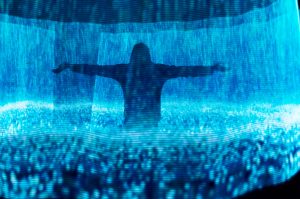
Surrender
This post is written by art therapist Christina Vasquez from Wichita, Kansas. All light paintings are made by her. Short bio on the bottom of the page.
Many thanks to the Light Painting Blog for the opportunity to write about my experience with Light Painting and Art Therapy. It was an honor to co-author with Jukka Laine the Digital Art Therapy chapter, Therapeutic Light Painting Photography: A Collaborative Approach to Visual Transformation and Empowerment (2017, Garner). The focus of the chapter was to share clinical interventions, risks, benefits, and observations.
As I sat down to write this post, I scoured through all my research, spreadsheets and graphs. I wrote and rewrote until I decided to back away from the numbers, and realized the story I wanted to tell; a story of Light, Resilience, and the power of Presence.
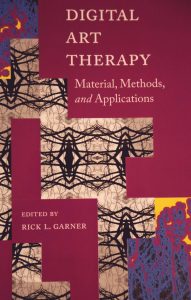
Digital Art Therapy cover
Art Therapy: Roots
With over 17 years in the field of Art Therapy, I still consider myself very much a student of life. I was inspired to be an art therapist at the age of 15 when visiting a refugee community while on a pilgrimage to Bosnia with my family in 1993. The experience would later influence my work with trauma survivors and my commitment to researching light painting as a viable therapeutic intervention.
At the time of my trip to Bosnia in 1993, I had been journeying through my own darkness, anger and depression. Art was my voice and means of expression and personal narrative. It allowed me to express what could not be said with words. I knew that I wanted to use art in a meaningful way with others but had no clue as to how. It’s difficult to describe, but something was pulling me to that refugee community, to that space in time, an unseen force that knew exactly where it was guiding me.

Erosion of Time
It was at the height of the Bosnian War. I had prepared myself to be amongst anguish, desolation and suffering. Sounds of gunfire and bombing in the distance penetrated the air. These families were suffering unimaginable loss. I felt like a trespasser on sacred grounds. Nothing prepared me for what I would find.
Resiliency
What I witnessed was children laughing, playing outside, engaged in the arts. I was perplexed. They immediately rushed upon me, took me by the hand and brought me into their community. They were eager to share their artwork, to create and play. The walls were covered with images: drawings of houses, families, people, and emotions; loved ones that had been killed in the war and homes that had been destroyed.
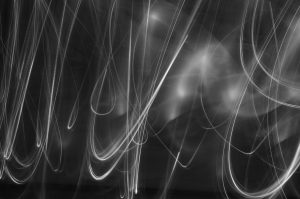
Ghostlings 1
Later I would come to realize that the children were grieving in their own way. They expressed their grief and loss through art, music, dance, drama and play. Just as I had discovered art as a voice and vehicle for expression, so were these children using the expressive therapies as a means of narrative, community, release and consolation. It provided a safe distancing to express the horror and trauma that still surrounded them. They invited me back the next day to see their Easter performances. The cultural dances and songs they sang with such soulful expression, it moved everyone present.
Sarajevo’s Street Art: The Unlikely Legacy of The Bosnian War
The Power of Presence
The caregivers were present amongst their own pain and suffering. They gave everything they had left to create a safe space for the children to thrive. Every one had lost something, or someone; some had lost all. Visitors such as myself came and left, but it was the people who remained consistently present for the kids, day in and out amongst the trauma that were family. I will be forever grateful for those families allowing me into their world, even but for a brief moment in time. I gave to them my presence; they gave to me so much more.
They taught me the importance of Light within darkness, Faith in the face of despair, Presence amidst pain, Creation amongst devastation, and Safety in the midst of chaos. Little did I know at the time that I would return 11 years later to volunteer as an art therapist in that same community. It was there that I would work with the 2nd generation of children to be traumatized by the genocide. The war was over, but the emotional aftermath and its impact on the family system was still present. Amongst it all, there is a soulful tenacity that radiates light and beauty in the people and community.
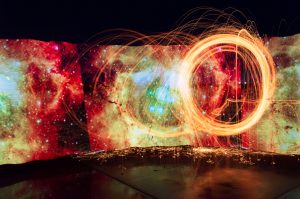
Evolution 1
Transformation & Empowerment
For those wondering, “what does this have to do with light painting?” As artists and clinicians, we must look within to be reminded of our roots…what fuels our journey. It may be the desire to create dynamic art and push the envelope of innovation. It may be to inspire others. That pivotal experience in Bosnia shaped who I am today, and who I am as an art therapist, light painter, and grief counselor. It explains why I fiercely advocate for the expressive therapies with trauma survivors and emphasize the importance of presence, safety, pacing and containment. It has enabled me to be authentically present in my work with disaster relief, trauma, grief, and loss.
Often times, an individual in pain is not looking to be “fixed.” They’re seeking to be heard, to be seen; for someone to walk with them on their journey… to illuminate the darkness, and to remind them of the light they already carry within themselves.
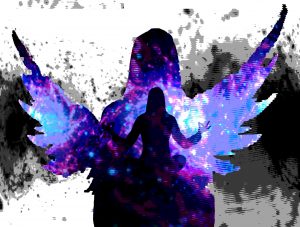
The Light Within
Lighting up the Darkness
As light painters we have the unique gift of illuminating the darkness and revealing the unseen. It is the profound process of transforming darkness itself into a canvas for expression. I’ve witnessed dynamic transformations that other modalities were unable to achieve. We may sometimes take for granted the metaphorical darkness, and what it means for a therapy client to enter into that space with us.
I’ve always given credit of my intro to light painting in 2013 to an art therapy client who sought a photographic technique that would “light up the darkness.” She had been navigating through her own version of darkness, as were other trauma survivors that I worked with. At this point in time, she wanted to explore shape and form at night with the ambient light of the moon and streetlights.
Inspiration
I researched, “light, darkness, photography,” and immediately found “light painting.” Hundreds of dynamic images jumped off the screen. Something in me was awakened. I then found Jukka Laine’s work utilizing LP as a therapeutic technique and came upon the Seeing With Photography Collective, and Dennis Smith’s testimonial in an Art Therapy Blog. I went home that night to try the technique.
And so it begins….
I set up my tripod, aperture, and exposure, dimmed the lights and grabbed a penlight. It’s amazing that something so simple as a squiggle of bright lines can elicit such a feeling of joy. My initial observation was that this process converts all the energy from the canvas into the space around you. You are no longer confined to a 2 dimensional space. Every subtle gesture and dynamic movement is translated into light and form. You can move to the rhythm of music, illustrate a story, portraiture, … the possibilities are endless. As an art therapist I saw it’s profound potential in working with trauma survivors, in journeying through darkness to light.

My first light painting, 2013
Initial Observations
After much exploration, research and collaboration with colleagues, I began bringing it into therapy sessions. The client who had originally inspired the technique quickly took off with it and began doing it at home and instructing others. My field observations were consistent with what I observed in session. The light “brush” acts as an object of kinesthetic transference, similar to how a scarf would be used in a dance and movement therapy session. It becomes an extension of self that provides a secondary gain, which is the light drawing itself. The photo produced in session provides a multitude of information and may be processed exploring self-perceptions, beliefs, gestalt principles, etc.
Working with the System
Returning to the narrative of Bosnia as it relates to therapeutic light painting; as clinicians and light painters we are often merely visitors… guests in the client’s world. It’s always important to be aware of their support systems and work with the multidisciplinary team. If I see them on just a contract basis and am not their primary therapist, I will do all I can to collaborate with their therapist. The therapist may have recommendations and insight, especially pertaining to triggers and resources. There is an abundance to be expressed and received in the therapeutic LP process. The client will benefit significantly more if the LP session/s can be bridged with other work they’re exploring, and the support systems they have in place.
Present Work and Future Plans
Since 2013, I’ve have utilized LP primarily with trauma survivors, those coping with grief, loss, body dysmorphic disorders, mood disorders and addictions. Having recently moved from New Orleans to Wichita Kansas, my primary goal over this last year has been to establish the structure and groundwork within my workplace to provide light painting photography to the veterans whom I am honored to serve. There are still a number of steps to take before official start up. With their consent, I hope to share their work in future blog posts, while honoring how they choose to share their story.
My hope is to also utilize LP in the community, providing opportunities for connection, expression, and healing while returning to my roots as an art therapist, working with children at risk. While this post was focused more on a narrative, I plan to share specific techniques, clinical observations, practical applications, and research in future posts.
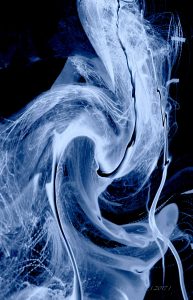
Monochromatic reclamation
The Darkness of the world cannot extinguish the light from a single flame.
St Francis of Assisi
This post is written by art therapist Christina Vasquez from Wichita, Kansas.
All light paintings are made by her.
Christina Vasquez
Specializing in the clinical application of Light Painting in conjunction with Art Therapy, Christina has over 17 years experience in the field of mental health care. Board Certified Art Therapist and Fellow in Thanatology, Christina discovered Light Painting in 2013 when searching for a therapeutic way to “light up the darkness.” Since then, she has co authored the Digital Art Therapy chapter focusing on Therapeutic Light Painting, and is currently working with veterans in the Wichita, Kansas area.










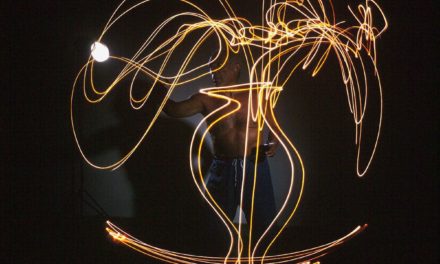

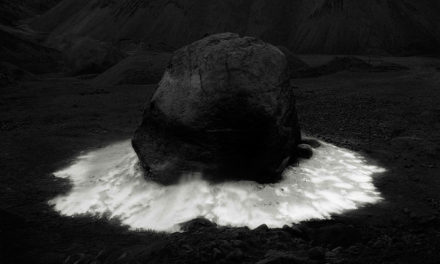
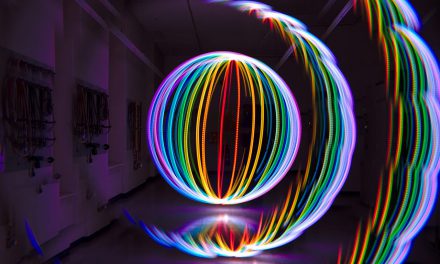

It is my pleasure to read this article. Thank you Christina!!!